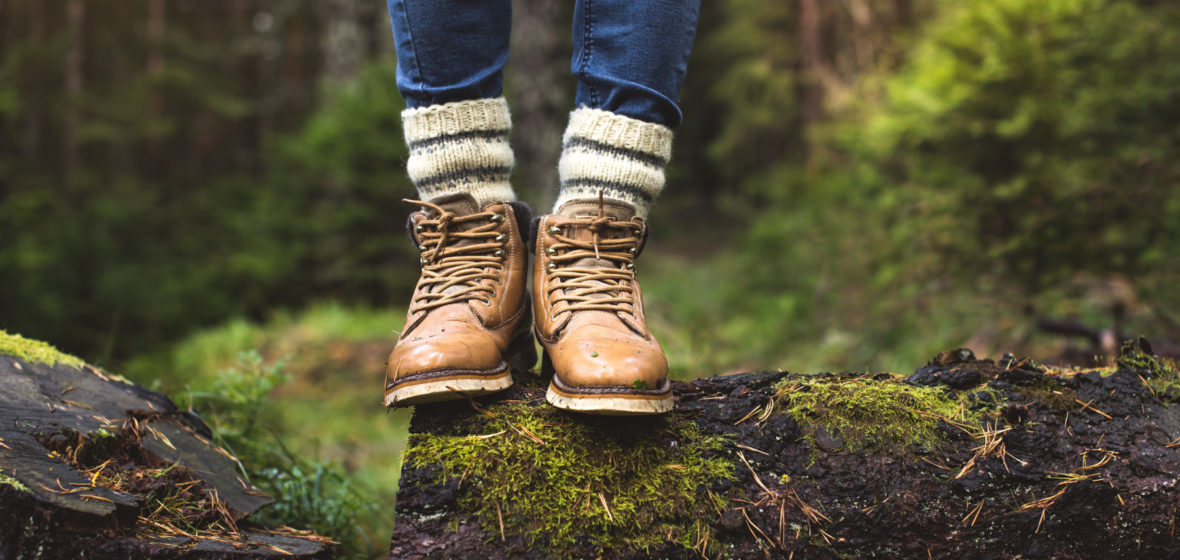Through conversations, exercises, Dreamtime stories and key messages, Paul Callaghan and Uncle Paul Gordon will sit you around the fire and share knowledge that reveals the power of Aboriginal spirituality as a profound source of contentment and wellbeing for anyone willing to listen. The following is an extract from the book.
In traditional times, no action or activity was above the Lore. Anyone breaking the Lore would be causing potential harm and suffering to the land and/or things that belonged to the land. Breaking the Lore therefore had serious consequences.
When we watch the world news, or as we read our social media feeds from around the world, do you think human beings as a global entity are following the essence of the Lore? That is, do you think human beings as a collective are ‘caring for their place and all things in their place’ above all other things?
How does the modern world view the land? Is it in the background of the theatre of life or is it the main stage? Do we live to serve it or do we expect it to serve us? In order to answer this question, consider the change in the earth’s population over the past two hundred years. In that time, the population has grown from one billion to more than 7.7 billion. Some people would argue that this increase is a fairly natural result of exponential growth, and they may be right. But from an Aboriginal perspective, the number of people now living on this earth is an indication of the Lore being broken and people as a collective placing themselves above the earth and nature. Our Old People might say, ‘if there are too many people living in one place, they will eventually destroy the balance of that place. You silly people are not acting as if the earth is here to serve you when it should be the other way round. You are here to serve it.’
Of the more than 7.7 billion people who are on this earth, how many are committed to spending every minute of their lives caring for the land? Is the land something we feel owns us (as is the case with Aboriginal people) or is it an asset/resource to be bought, sold, drilled, cut, mined, poisoned, cleared, controlled and conquered?
I have a degree in commerce, have lectured in economics and have run a corporation with $70 million annual budget, so I understand capitalist market forces and the importance of employment, agriculture, industry and trade in supporting our current world population. We cannot go back to a population of one billion people, and in many ways, traditional land management practices are no longer workable in a world with land titles, fences, cities and the need for continuous economic growth. At the same time, there is still much to be learned by bringing the two worlds together. We certainly cannot continue our destructive ways.
In traditional times, Aboriginal kinship and governance systems controlled the number of people living on Country to ensure the land could provide for the population in a sustainable way. For instance, in the Country of my people, the Worimi people, men would ingest a natural contraceptive made from a plant extract when hard times, such as a drought, were imminent, to ensure the population didn’t grow beyond what the land could sustain.
Controlling population growth is obviously contentious, but an important learning from the Aboriginal world view is the overarching need to care for the planet. This means supporting the current population with employment, agricultural, industry and trade practices that nurture the environment rather than destroy it. There is no doubt the world has the collective genius to do this; what seems to be currently missing is the aggregate will.
In traditional times, children were taught to love the land and all things connected to the land.
As a child, we are given many, many Ngurrampaa stories. From the stories come morals and from the morals come the rules of the land and the rules of society. From the rules comes L-A-W law.
As soon as a child was born, they were immersed in the learning process through connection to story, including oral story, dance, song and art. As the child grew, the stories were repeated again and again. As the child transitioned to puberty, they would know hundreds of stories that provided them with much of the knowledge and values they needed for an adult life of meaning and wellbeing.
The rite of initiation was the culmination of this part of the learning process and the milestone whereby a child became an adult and was given full adult responsibilities. Upon receiving these responsibilities, the individual was subject to the Lore, including punishment if the rules of the Lore were broken.
In our contemporary society, the requirement to follow the rules and consequent penalties for not adhering to them can be described as L-A-W law. These rules are usually developed in one of two ways: either through statute law (the law made by parliament) or case law (based on the decision of judges in superior courts). Contemporary laws are often hard to interpret and require specialised expertise in the form of lawyers.
Unlike traditional Aboriginal society, in which each young person knew every rule they had to live by, it is impractical to expect the contemporary school system to provide students with knowledge of the many rules they are expected to uphold. There is therefore no connection between L-O-R-E (knowledge) and L-A-W (rules).
In Aboriginal society, the connectivity of L-A-W (rules) to L-O-R-E (knowledge) has always been critical. L-O-R-E is a reflection of tens of thousands of years of traditional stories, the knowledge they provide and the morals and responsibilities that are embedded in that knowledge.
Given the breadth of L-O-R-E as a learning system and its importance in establishing L-A-W in traditional Aboriginal society; it is no surprise that Aboriginal societal life was one of connectivity, harmony and balance.
When you grew up in traditional Aboriginal society, you learned all about rocks. And sometimes old people will say, ‘you know those rocks. They grow. Rocks are born, rocks get pregnant, rocks breathe and rocks die like all things do.’
So there are things other people might think are inanimate that Aboriginal people talk about as having spirit. Everything has spirit and soul and everything has the right to be respected. And everything has a story.
When you grow up learning all about those things, the more you know – the more stories you know – the more you understand your place. The stories tell you about bush tucker, bush medicine, the rules of your society, values and magic.
So from a really, really early age, Aboriginal kids would sit down with all their relatives – their mothers, fathers, grandparents, aunties, uncles – and be told stories. And from these stories they were learning all their values.
And the more you learn about your place, the easier it is to exist in your place and the more you love your place. If you know where bush medicine is, or bush tucker is, or where shelter is, the easier it is to live in your place and connect with it. That place is where you come from. It is your place.
Your place gives you everything you need. It gives you water and it gives you food. It gives you shelter, it gives you medicine and it gives you connection to one another.
And when you listen to the Old People, they will tell you ‘don’t just listen to humans, listen to them old animal ancestors too. Listen to the kangaroos, listen to the emus, listen to the birds, listen to the wichetty grubs.’
All things will teach you if you take notice. And the more things you take notice of, learn from and have a connection to, the more you understand and love what is around you.
So in Aboriginal society, all things were respected as equal. There was no ‘lesser’ creature on earth. Everything had a right to exist and everything was connected to everything else.
In the Aboriginal world view we are all equal. Plants, rocks, animals, insects and everything around us are considered our teacher.
The more I connect to what is around me, the more I look at what is around me, the more I listen to what is around me, the more I will learn.
This connectivity is inherent in the Aboriginal L-O-R-E system, which is underpinned by unity, equality and life. Non-Aboriginal law, by contrast, is a system underpinned by division, inequality and fear that disconnects us from our surroundings. It is unlikely this book will overhaul the L-A-W system, but it can hopefully motivate you to be part of a revitalisation of the L-O-R-E system by increasing connectedness and learning through the sharing of story.





